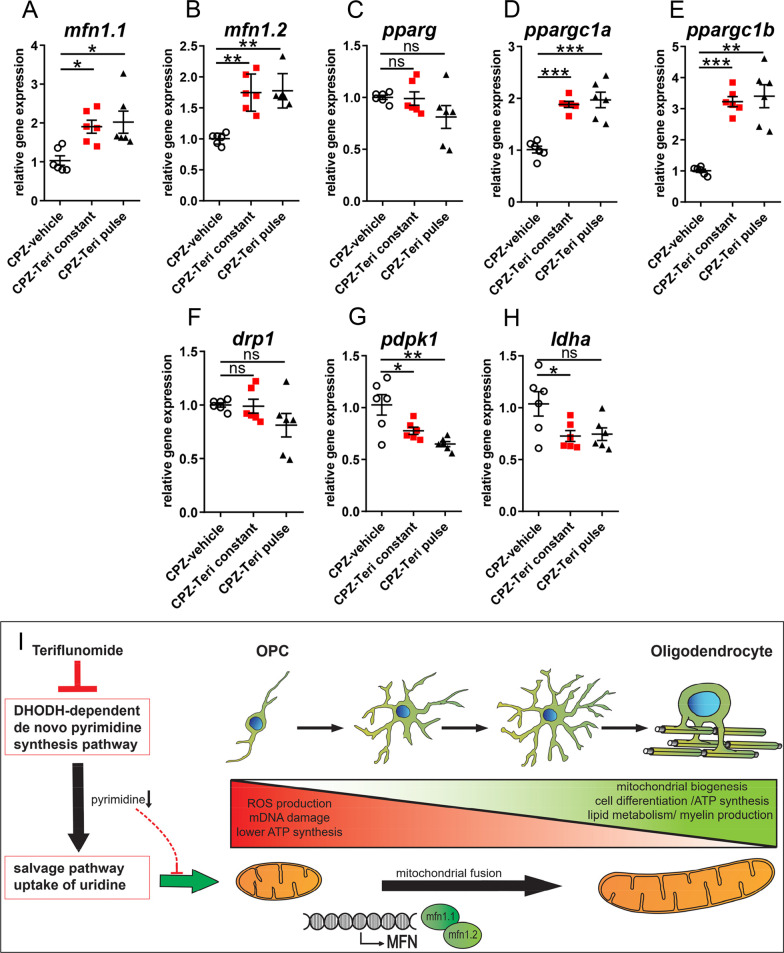Fig. 5.
Mitochondrial gene expression responses upon teriflunomide application. A–H Quantitative RT-PCR of the dissected corpus callosum 7 days after cuprizone withdrawal (remyelination) indicated that both teriflunomide pulse and constant stimulation schemes led to a significant upregulation of genes catalyzing mitochondrial fusion such as mfn1.1, mfn1.2, ppargc1a, ppargc1b and to downregulation of genes responsible for glycolytic pathway, e.g., pdpk1 and ldha transcript levels, whereas drp1 (mitochondrial fission) and pparg were not affected. GAPDH was used as reference gene. I Illustration depicts mitochondrial dynamics involved in oligodendroglial differentiation, cell maturation and myelin sheath generation according to [49]. Fragmented and condense mitochondrial morphology is linked to ROS production, mitochondrial DNA damage and lower ATP synthesis. An elongated mitochondrial network hints to active mitochondrial biogenesis, ATP synthesis and lipid metabolism necessary for cell differentiation and generation of myelin. Teriflunomide induced the upregulation of mitofusins, and also mitochondrial elongation by depletion of the cellular pyrimidine pool secondary to DHODH inhibition. Number of animals per analysis n = 6. Data are shown as mean values (horizontal lines), while error bars represent standard error of the mean (SEM; vertical lines). Plots also show all individual data points. Statistical significance was calculated using Kruskal–Wallis test with Dunn’s post-test (A–C) and Tukey’s range test following one-way ANOVA (D–H). Data were considered statistically significant (95% confidence interval) at *p < 0.05, **p < 0.01, ***p < 0.001

